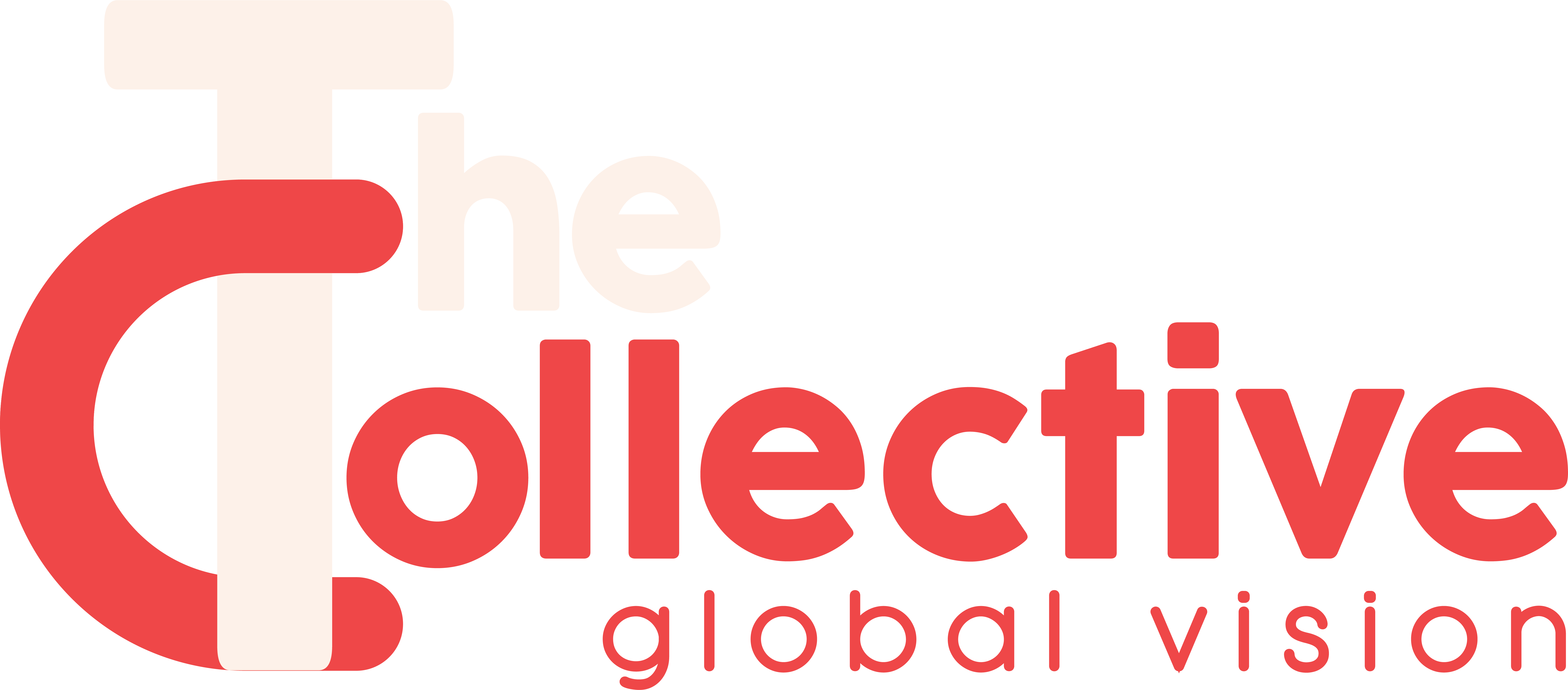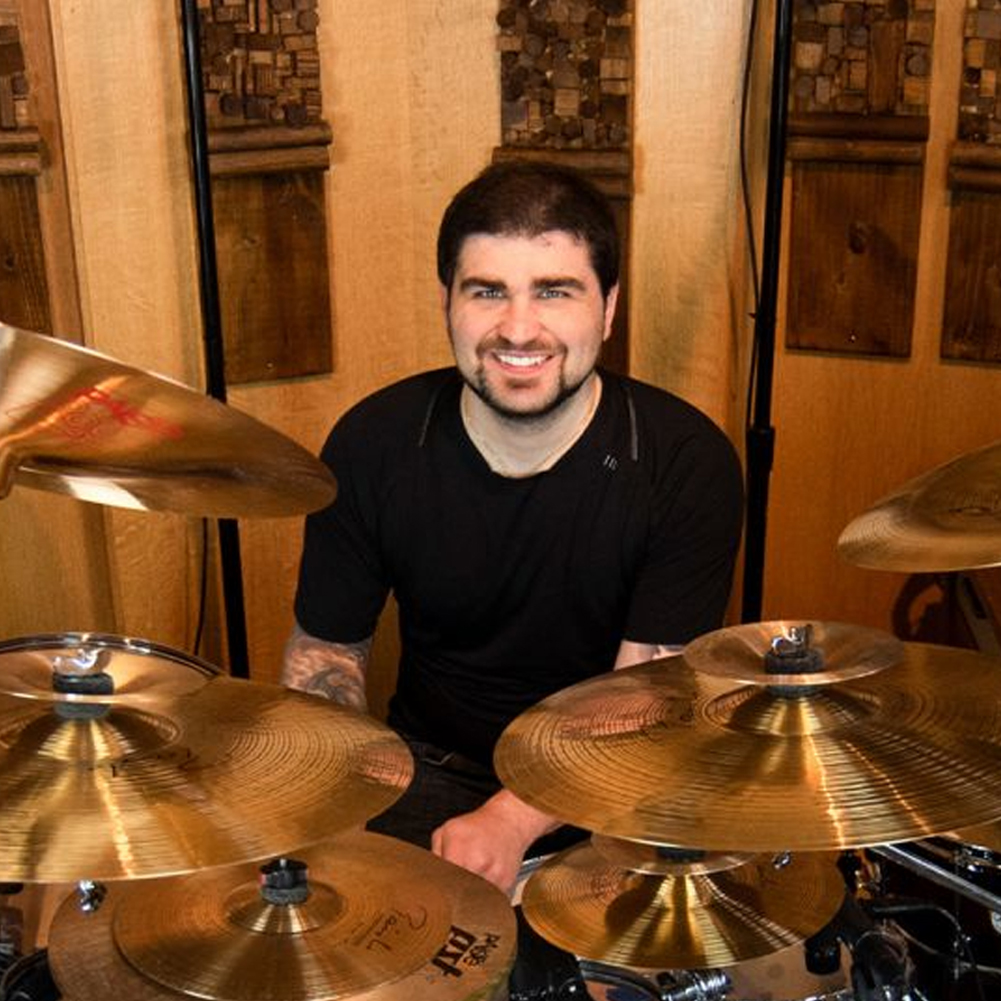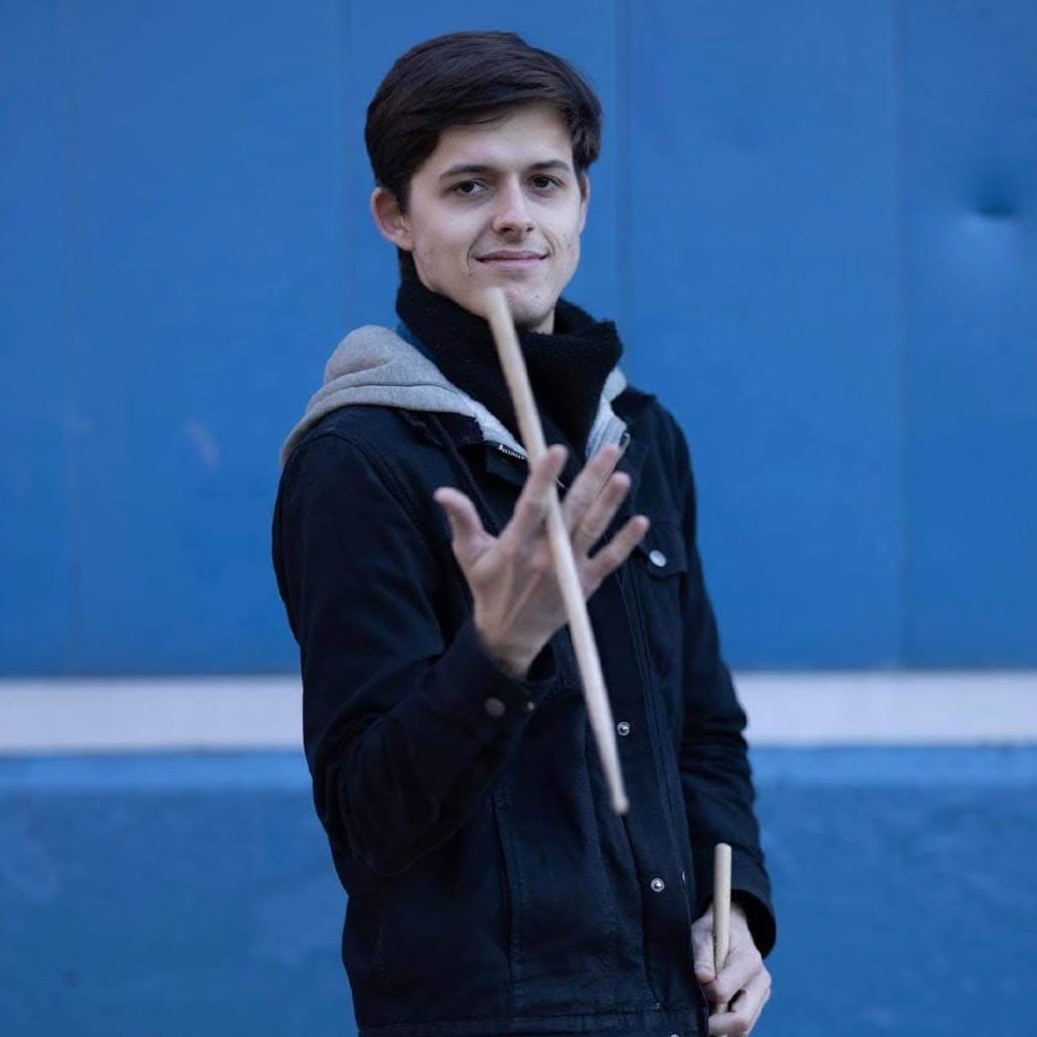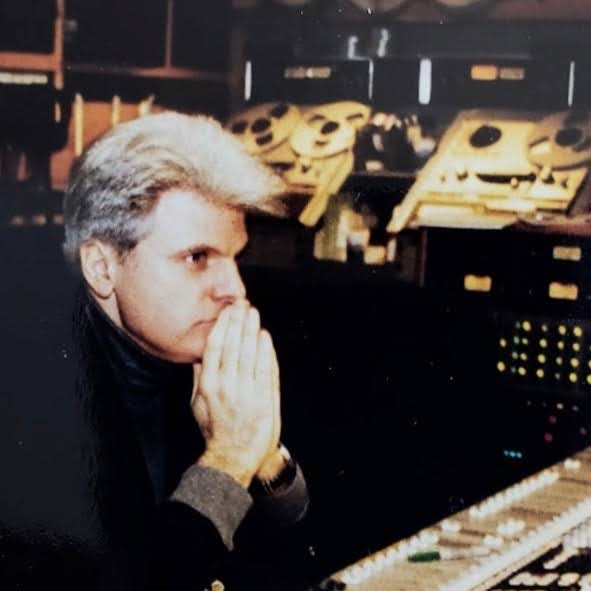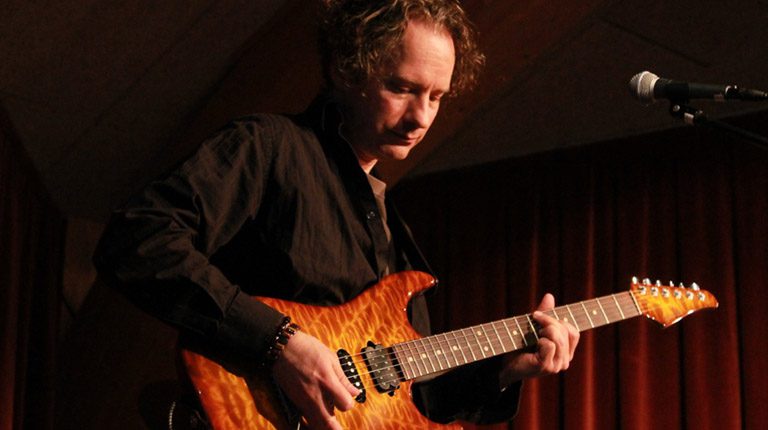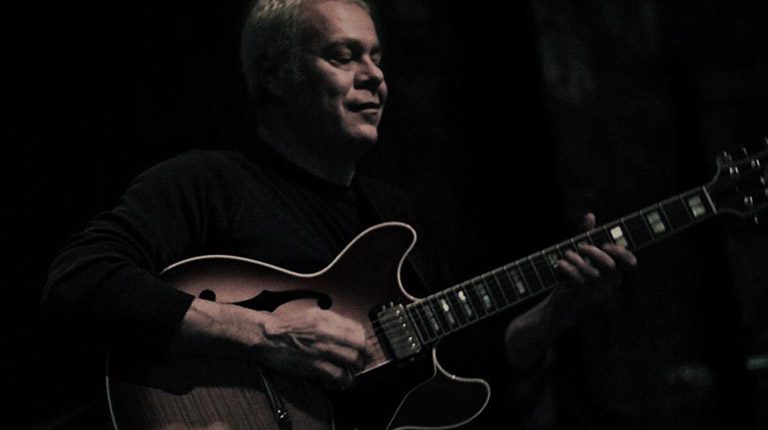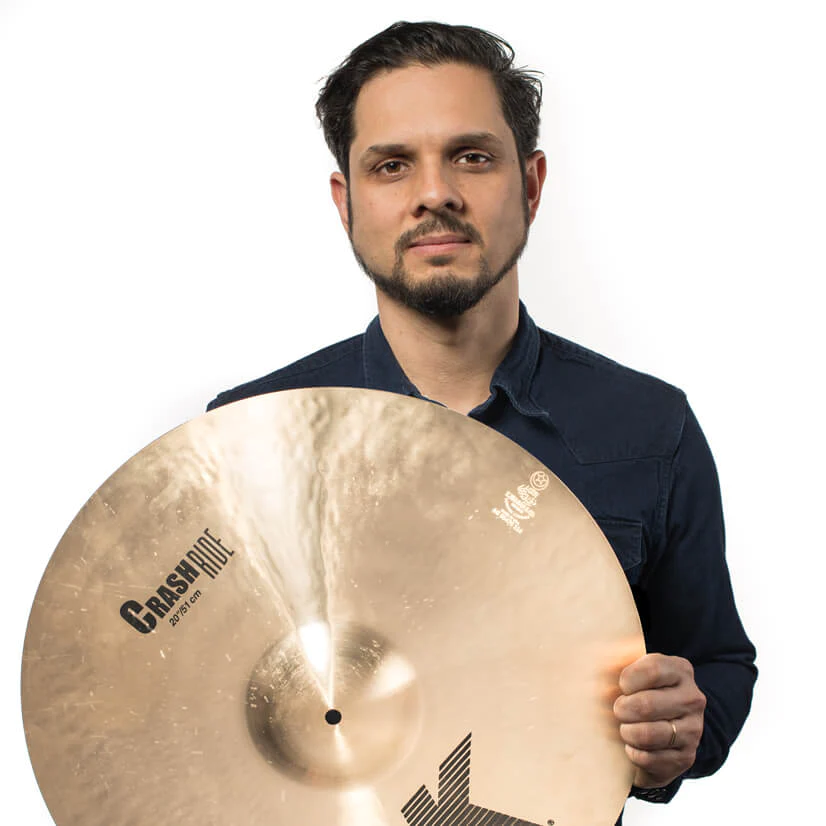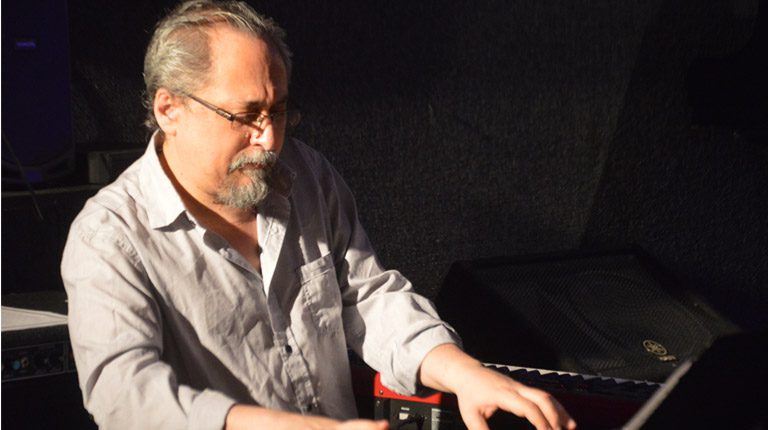Play with your peers in
Real Deal Rehearsals
Practice and perform in an ensemble of your fellow students with the guidance of a faculty bandleader.
Play with gigging NYC musicians in
Pro Rehearsals
Learn how to play like a pro by playing with the pros in advanced ensemble classes.
Daily Individual Practice Time
Practice hours are where the real progress is made, so we build in those essential hours in all of our programs.
State-of-the-art facility in the heart of Manhattan
Get access to our recording studio, livestream room, practice spaces, student lounge, and stage.
Start at your skill level
Begin with our preparatory classes to hone your fundamentals, or skip straight to higher-level coursework.
Develop your stylistic repertoire
Study many popular genres from jazz and funk to afro-cuban and pop.
Anchor Teacher private lessons
Get individualized guidance from one of our faculty members to help you succeed in your program and musical career.
Focus not only on your technique but also on musicianship.
Develop your understanding of theory, aural skills, keyboard proficiency, groove, and sight-reading skills.
Learn micing technique and music production.
Be able to record at home or feel at home in an established recording studio.
Choose your electives
Customize your program to pursue your interests and career goals.
Record your music on our SSL board
Arrange and record your favorite songs in our high-end recording studio to showcase your ability and musicality.
Take the stage at your recital
Perform for your peers, teachers, family, friends, and musical community. Get a standing ovation for your years of hard work!
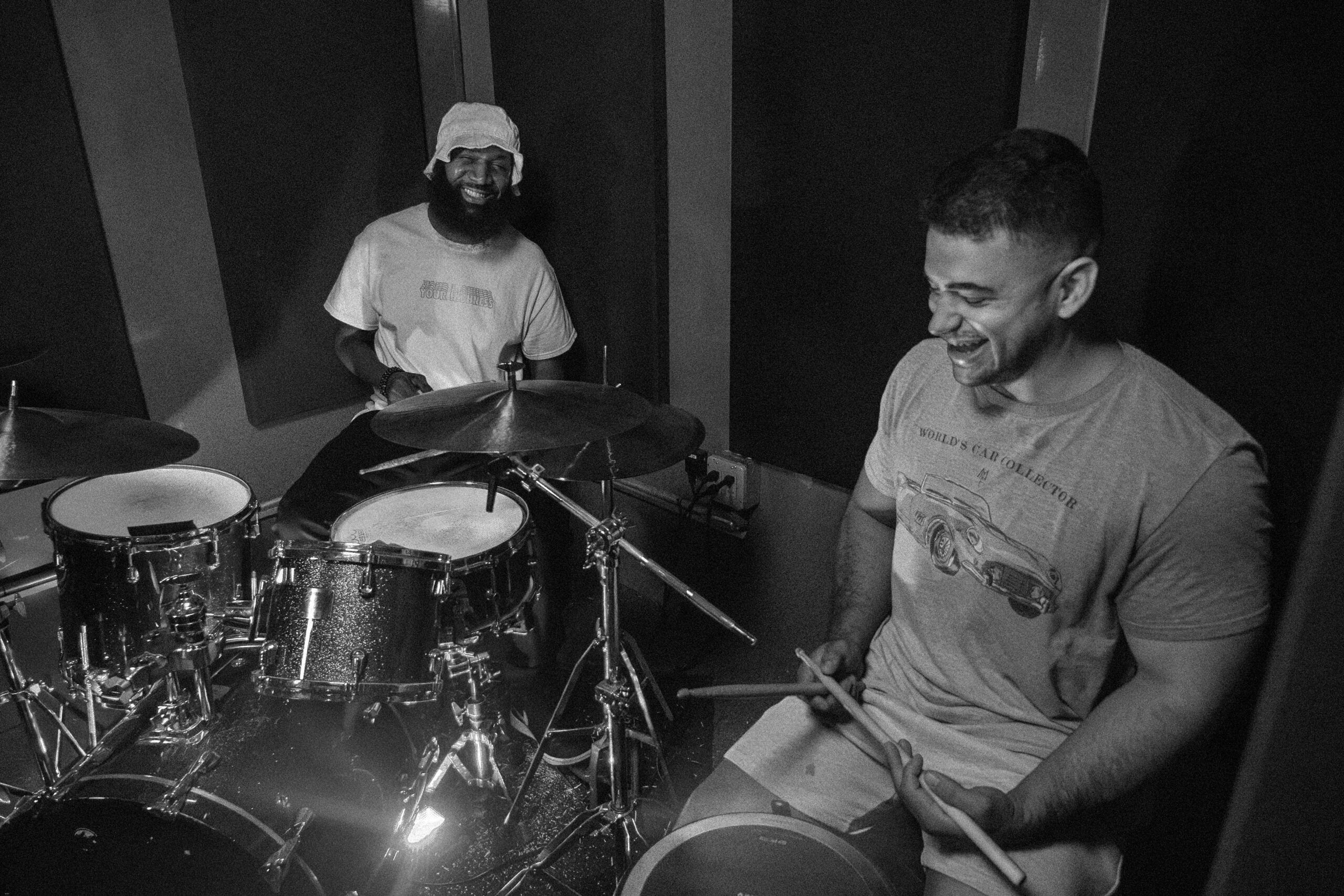
The Collective Global Vision is accredited by the National Association of Schools of Music (NASM), which sets national standards for programs of music and the institutions that deliver those programs. For students, accreditation provides a validation of the quality of the programs offered and a commitment to continual improvement.
If you would like more information please call +1 (646) 808-3648 or email [email protected]
More info on NASM: https://nasm.arts-accredit.org/
Our Instructors
Styles and Genres
As a Diploma student, analyze the underlying rhythmic concepts of many popular music genres and the fundamental techniques necessary to perform them in an ensemble.
NASM-Accredited Program Information
2-Year Diploma in Music Performance
For Drums, Bass, Guitar, and Keyboard
Program Contact Hours: 1,064 (Plus 800 Hours Of Scheduled Individual Practice Time)
Length: 1,864 Clock Hours
Minimum Program Entry Proficiency Rating: Beginner (1)
Expected Proficiency Rating Upon Completion Of The Program: Professional (6)
Course Levels: 1: Preparatory A, 2: Preparatory B, 3: Intermediate A, 4: Intermediate B, 5: Performance Musicianship Program, 6: Elective Intensive Program, 7: Elective Intensive Program, 8: Advanced Performance Program
Purpose: Provide students entering at a beginner level of proficiency with advanced education in music theory knowledge, sight-reading skills, instrument technique and performing and recording experience. Graduates are prepared to pursue employment in the field of professional music in roles ranging from live performer to studio session musician to music director.
1.5-Year Diploma in Music Performance
For Drums, Bass, Guitar, and Keyboard
Program Contact Hours: 828 (Plus 600 Hours Of Individual Scheduled Practice Time)
Length: 1,428 Clock Hours
Minimum Program Entry Proficiency Rating: Advanced Beginner (2)
Expected Proficiency Rating Upon Completion Of The Program: Professional (6)
Course Levels: 3: Intermediate A, 4: Intermediate B, 5: Performance Musicianship Program, 6: Elective Intensive Program, 7: Elective Intensive Program, 8: Advanced Performance Program
Purpose: Provide students entering at an advanced-beginner level of proficiency with advanced education in music theory knowledge, sight-reading skills, instrument technique and performing and recording experience. Graduates are prepared to pursue employment in the field of professional music in roles ranging from live performer to studio session musician to music director.
1.5-Year Diploma in Vocal Performance
Program Contact Hours: 817 (Plus 600 Hours Of Individual Scheduled Practice Time)
Length: 1,417 Clock Hours
Minimum Program Entry Proficiency Rating: Beginner (1)
Expected Proficiency Rating Upon Completion Of The Program: Professional (6)
Course Levels: 1: Vocal Preparatory A, 2: Vocal Preparatory B, 3: Vocal Intermediate A, 4: Vocal Intermediate B, 5: Vocal Advanced A, 6: Vocal Advanced B
Purpose: Provide vocalists entering at a beginner level of proficiency with advanced music theory knowledge, sight-reading skills, vocal technique and performing and recording experiences sufficient to qualify them for professional employment in a wide range of music performance-related settings.
1-Year Certificate in Music Performance A
For Drums, Bass, Guitar, and Keyboard
Program Contact Hours: 572 (Plus 400 Hours Of Individual Schedule Practice Time)
Length: 972 Clock Hours
Minimum Program Entry Proficiency Rating: Beginner (1)
Expected Proficiency Rating Upon Completion Of The Program: Advanced (4)
Course Levels: 1: Preparatory A, 2: Preparatory B, 3: Intermediate A, 4: Intermediate B
Purpose: Provide students entering at a beginner level of proficiency with a comprehensive foundation in knowledge, skills and experience essential to a career in music. Students learn the roots of multiple styles as well as instrument technique, music theory, music reading, and the skills of ensemble performance. Graduates are prepared for higher-level music studies and/or to pursue work as intermediate-level performing musicians.
1-Year Certificate in Music Performance B
For Drums, Bass, Guitar, and Keyboard
Program Contact Hours: 542 (Plus 400 Hours Of Individual Scheduled Practice Time)
Length: 942 Clock Hours
Minimum Program Entry Proficiency Rating: Advanced Beginner (2)
Expected Proficiency Rating Upon Completion Of The Program: Advanced (4.5)
Course Levels: 3: Intermediate A, 4: Intermediate B, 5: Performance Musicianship Program, 6: Elective Intensive Program
Purpose: Prepare students entering at an advanced beginner level of proficiency with a range of advanced instrument skills, music theory, sight-reading and ensemble performing experiences in a wide range of musical styles. Graduates are prepared for higher-level study and/or to pursue employment in contemporary music performance, music teaching and other music-related fields.
1-Year Certificate in Music Performance C
For Drums, Bass, Guitar, and Keyboard
Program Contact Hours: 492 (Plus 400 Hours Of Individual Scheduled Practice Time)
Length: 892 Clock Hours
Minimum Program Entry Proficiency Rating: Intermediate (3)
Expected Proficiency Rating Upon Completion Of The Program: Professional (6)
Course Levels: 5: Performance Musicianship Program, 6: Elective Intensive Program, 7: Elective Intensive Program, 8: Advanced Performance Program
Purpose: Prepare students entering at an intermediate level of proficiency to a professional level. Courses focus on live performance and studio recording as well as advanced music theory and composition. Graduates are prepared to pursue employment in the field of professional music in roles ranging from live performer to studio session musician to music director.
For more information on the programs, see below:
The course levels below are listed from most basic to most advanced. They are the smaller components made up of music classes that lead to a Letter of Completion, a Certificate, or a Diploma. Find details about each program and the music courses that comprise it by clicking below.
Course Level 1
Preparatory A is designed as the Collective Global Vision’s entry-level program of study, and focuses on developing the rudimentary, technical, and musicianship skills required for further study, as well as an introduction to the rhythm section and the four foundation styles of Rock, Jazz, Afro-Cuban, and Brazilian. Students are assigned an “anchor” teacher to help guide them through the course work.
Preparatory A includes the following classes:
Musicianship:
This class is part of a seven-level sequence, which focuses on music theory, aural skills, and keyboard proficiency.
Reading Proficiency Class:
The Reading Proficiency Class consists of a series of progressive classes. Students learn sight-reading skills and the ability to interpret music from a wide variety of sources and form.
Time & Groove Prep Class 1:
This three-class sequence introduces students to the importance of playing in time and with a musical groove. Work includes playing a Latin groove for 32 bars with the metronome and transitioning to a shuffle groove. Students apply what they have learned by playing with a click track and with a professional rhythm section.
Instrumental Technical Proficiency 1:
- Drums:
Students are introduced to the study of rudimental drumming as the foundation for a solid drumming technique. Students study and perform together as an ensemble. - Bass, Guitar, and Keyboard:
Students are introduced to the basics of proper instrumental technique with a focus on proper hand and body position and correct fingerings and hand positions for commonly used scales and arpeggios.
Style Prep Sequence – Style Prep 1:
Students work with an instructor on their instrument to develop the conceptual framework and application of applied techniques to perform in a rhythm section setting in the designated contemporary root styles of Rock and Jazz. Each week’s class is dedicated to a particular sub-style.
Style Prep Rhythm Section 1:
This class gives the student the opportunity to apply the work done in the style prep classes in an actual rhythm section setting made up of professional musicians.
Prep Real Deal Rehearsal 1:
Students work together in a rhythm section format, under the supervision of a faculty member, to rehearse a series of practical real-life situations, the mastery of which is essential to every performing rhythm section musician.
Anchor Teacher Private Lessons:
Students are assigned a private instructor who acts as the student’s principal teacher and advisor regarding the tasks presented in the overall program. Students meet with this anchor teacher on a weekly basis, usually starting in week 2 of the quarter.
Daily Individual Practice Time: Students are assigned 2 hours per day during the week, open hours on the weekend, and additional hours available at off-peak times throughout the week.
Course Level 2
Preparatory B continues with the work begun in Preparatory A and focuses on rudimentary, technical, and musicianship skills, as well as further rhythm section work in the four foundation styles of Rock, Jazz, Afro-Cuban, and Brazilian. Students are assigned an “anchor” teacher to help guide them through the course work.
Preparatory B includes the following classes:
Musicianship:
This class is part of a seven-level sequence, which focuses on music theory, aural skills, and keyboard proficiency.
Reading Proficiency Program:
The Reading Proficiency Class consists of a series of progressive classes. Students learn sight-reading skills and the ability to interpret music from a wide variety of sources and formats.
Time & Groove Prep Class 2:
This three-class sequence continues to teach students about playing in time and with a musical groove. Students play a Latin groove for 32 bars with a metronome and transition to playing 32 bars of swing time. Also, students play a rock groove for 16 bars with the metronome and transition to a Hi-Hat groove for 16 bars. Students apply what they have learned by playing with a click track accompanied by a professional rhythm section.
Instrumental Technical Proficiency 2:
- Drums: Students continue the study of rudimental drumming as the foundation for a solid drumming
- Bass, Guitar, and Keyboard: Students continue to develop the basics of proper instrumental technique with a focus on proper hand and body position as well as correct fingerings and hand positions for commonly used scales and arpeggios.
Style Prep Sequence – Style Prep 2:
Students work with an instructor on their instrument to develop a conceptual framework and application of applied techniques to perform in the designated ethnic root styles of Brazilian and Afro-Cuban. Each week’s class is dedicated to a particular style or groove.
Style Prep Rhythm Section 2:
This class gives the student the opportunity to apply the work done in the style of preparation and student rehearsal classes in an actual rhythm section setting made up of professional musicians.
Prep Real-Deal Rehearsal 2:
Students continue to work together in a rhythm section format, under the supervision of a faculty member, to rehearse in a series of practical real-life situations, the mastery of which is essential to every performing rhythm section musician.
Anchor teacher private Lessons:
Students are assigned a private instructor who acts as the student’s principal teacher and advisor. Students meet with their anchor teacher on a weekly basis, usually starting in week 2 of the quarter.
Daily Individual Practice Time: Students are assigned 2 hours per day during the week, open hours on the weekend, and additional hours available at off-peak times throughout the week.
Course Level 3
Intermediate A is an intensive period of study, which focuses on musicianship skills, style performance competencies, and professional performance experiences.
Intermediate A includes the following classes:
Musicianship:
This class is a part of a seven-level sequence, which focuses on music theory, aural skills, and keyboard proficiency.
Reading Proficiency Class:
The Reading Proficiency Class of a series of progressive classes. Students learn sight-reading skills and the ability to interpret music from a wide variety of sources and formats.
Time & Groove Class 3:
This four-class sequence reinforces to students the importance of playing in time and with an accurate and musical groove no matter what the technical challenge. Students play an advanced Latin groove for 16 bars with a metronome and transition to a Hi-Hat cross-stick groove for 16 bars. Transition exercises are also given from swing to shuffle and back. Repertoire includes tunes such as Cold Sweat, My Girl, and Respect. Students apply what they have learned by playing with a click track and with a professional rhythm section.
Technical Proficiency:
Drums: Rudimental Drum Ensemble 3:
Students work in an ensemble setting learning and applying foundation rudiments. This class focuses on hand technique, ensemble performance, and reading skills.
Bass, Guitar, and Keyboard Technical Proficiency 3:
Students apply the basics of proper instrumental technique with a focus on proper hand and body position and correct fingerings to typical rhythm section and instrumental ensemble material.
Performance and Lab Classes:
Drummers Lab-1:
This class is designed to help students integrate all the information that they are receiving in other classes and apply that information towards the steady development of new performance skills. Tasks include playing variations of single paradiddles with accents on the bass drum and crash cymbal, and the application of alternate sticking in a variety of 8th and 16th note grooves.
Bassist Walking Bass Line Lab-1:
This course introduces students to the important theoretical, conceptual, and technical aspects of walking bass lines. Course material includes the study of diatonic and chromatic passing tones on strong and weak beats – on dominant 7th chord structures, including II-V-I patterns in all keys. The ultimate goal is for the student to improvise strong, functional, and melodic bass lines.
Guitar Ensemble:
This ensemble gives guitarists the opportunity to study, rehearse, and perform material written and conceived for this instrumentation. Students are coached on ensemble performance, dynamics, improvisation, and playing in a variety of styles.
Keyboard Accompaniment-1:
This course gives keyboardists the opportunity to develop the ability to accompany vocalists and other instrumentalists. Students are coached on conceptual and technical aspects of this skill area, while working with fellow vocal and instrumental students.
Real Deal Rehearsal-1:
This course gives students the practical experience of working together with a faculty “bandleader” in an actual rehearsal situation. Students perform and create arrangements in a variety of styles and settings in response to the demands of the music and bandleader. This course commences with a public student recital.
Latin Percussion Ensemble-1:
This course gives students in all divisions the opportunity to study Afro-Cuban music, in an ensemble setting, on the indigenous percussion instruments.
Styles and Harmonic Sequences – 1
Drums and Bass Style Sequence – 1
Style Courses Sequence A:
Each style is presented in a four-class sequence consisting of a Style Analysis class followed by two Groove Mechanics classes and culminating with a style Rhythm Section.
- US Roots (New Orleans)
- US Roots (Jazz)
- Traditional Rock / Blues
- Traditional Afro-Cuban
- Traditional Funk-Soul
- Traditional Jazz
- Gospel
- Afro-Pop
1. Style Analysis – Series 1:
Students are introduced to various styles and periods of music, and the important musicians and groups who helped define each style. The instructor demonstrates the role played by each instrument in each style. Course material includes specially selected and representative discographies, which have been compiled by the instructor for class discussion and review.
2. Groove Mechanics Series 1:
This course follows up on the Style Analysis class by having the instructor work with the students in developing the instrumental techniques and conceptual frameworks required to perform competently in the designated style. All instruments meet separately. Students are also given I-Pods on which the repertoire compilations are loaded.
3. Style Rhythm Section Series 1:
This is an opportunity for students to work in a rhythm section setting with professional musicians who are experts in the designated style. Each instrumental division meets separately.
4. Quarter-End Juries:
Each student must pass a quarter-end “Jury” performing pieces in selected styles from the style sequence list. The Jury is made up of the faculty members who teach in the style sequence.
Guitar and Keyboard Harmonic Sequence – 1
Harmonic Studies Sequence – 1:
This four-class harmonic sequence takes students through a series of chord progressions, from modal harmonies to full chromatically altered chords. Students analyze, apply the progression to their instrument, and then finally, perform in a professional rhythm section on repertoire, which uses the progression being studied.
Harmonic Series -1 for Guitar and Keyboard CPA:
1. Modal Harmonies
2. Dominant 7th Harmonies (blues)
3. Chord Extensions
4. 2-5-1 Progressions (diatonic)
5. “Rhythm” Chord Changes
1. Harmonic Analysis – Series 1
Students study the underlying theory of the progressions being studied.
2. Applied Harmonies – Series 1
This course shows students how to apply the topic being studied in a musical context and how to deal with the technical instrumental issues arising from the topics at hand.
3. Rhythm Section – Series 1
This is an opportunity for students to perform the material being studied in a rhythm section setting accompanied by professional musicians. The instructor and the other rhythm section musicians critique student performances.
4. Quarter-End Juries:
Each student must pass a quarter-end “Jury” performing pieces in selected styles from the style sequence list. The Jury is made up of the faculty members who teach in the style sequence.
Individual Study and Practice – All Divisions
Anchor Teacher Private Lessons:
Students are assigned a private instructor who acts as the student’s principal teacher and advisor. Students meet with this teacher 8 times during the quarter, usually weekly, starting in week 2 of the quarter. Students are also allocated 5 additional elective private lessons with a teacher, or series of teachers, of their choice.
Elective Private Lessons:
Students are allocated 5 private lessons to be used to do additional work or make up missed work with any regular faculty member.
Daily Individual Practice Time:
Students are assigned 2 hours per day during the week, open hours on the weekend, and additional hours available at off-peak times throughout the week.
Course Level 4
Intermediate B is an intensive period of study, which focuses on musicianship skills, style performance competencies, and professional performance experiences. Intermediate A is a prerequisite for Intermediate B.
Intermediate B includes the following classes:
Musicianship:
This class is part of a seven-level sequence, which focuses on music theory, aural skills, and keyboard proficiency.
Reading Proficiency Class:
The Reading Proficiency Class consists of a series of progressive classes. Students learn sight-reading skills and the ability to interpret music from a wide variety of sources and formats.
Time & Groove Class 4:
This four-class sequence is a continuation of the classes taught in the CPA program, which emphasize to students the importance of playing in time and with a musical groove, no matter what the technical challenge. Students play a variety of transition grooves from and into Swing, Funk, Latin, and Shuffle. Students apply what they have learned by playing with a click track and with a professional rhythm section.
Technical Proficiency:
Rudimental Drum Ensemble 4:
Students work in an ensemble setting learning and applying foundation rudiments. This course focuses on hand technique, ensemble performance, and reading skills.
Bass, Guitar, and Keyboard Technical Proficiency 4:
Students apply the basics of proper instrumental technique with a focus on proper hand and body position as well as correct fingerings to typical rhythm section and instrumental ensemble material.
Performance and Lab Classes:
Drummers Lab-2:
This class is designed to help students integrate all the information that they are receiving in other classes and apply that information towards the steady development of new performance skills. Tasks include playing variations of more complex rudiments with accents on the bass drum and crash cymbals, and the application of alternate sticking in a variety of 8th, 16th, and 6/8 grooves.
Bassist Walking Bass Line Lab-2:
This course continues and builds on the work done in Walking Bass line 1. Students study more complex progressions and a wider range of bass line patterns. Course material continues with the study of diatonic and chromatic passing tones on strong and weak beats – the repertoire focuses on the minor as well as major mode. There will be considerable emphasis on rhythmic elements and creating bass lines in the context of non-functional harmony.
Guitar Ensemble:
This ensemble gives guitarists the opportunity to study, rehearse, and perform material written and conceived for this instrumentation. Students are coached on ensemble performance, dynamics, improvisation, and playing in a variety of styles.
Keyboard Accompaniment-2:
This course continues from where KA-1 left off. Keyboardists have the opportunity to develop the ability to accompany vocalists and other instrumentalists in a wide range of styles, including standards, R&B, Jazz, and Brazilian styles. Students are coached on conceptual and technical aspects of this skill area, while working with fellow vocal and instrumental students.
Real Deal Rehearsal-2:
This course gives students the practical experience of working together with a faculty “bandleader” in an actual rehearsal situation. Students are introduced to a variety of musical settings, including working with a vocalist and lead horn players in different styles, additional percussionists, and other instrumentalists. Course commences with a public recital.
Latin Percussion Ensemble 2:
This course gives students in all divisions the opportunity to study Brazilian music, in a Batucada ensemble setting, on the indigenous percussion instruments.
Styles and Harmonic Sequences 2
Drums and Bass Style Sequence B:
Each style is presented in a four-class sequence consisting of a style analysis class, followed by two groove mechanics classes, and culminating with a pro style rhythm section.
- Caribbean
- Contemporary Rock
- Contemporary Jazz
- Contemporary Funk
- Contemporary Afro-Cuban
- Brazilian
- Hip-Hop
- Drum n Bass / Electronic
1. Style Analysis – Series 2:
Students are introduced to various styles and periods of music, and the important musicians and groups who helped define each style. Instructors demonstrate the role played by each instrument in each style. Course material includes specially selected and representative discographies, which have been compiled by the instructors for class discussion and review.
2. Groove Mechanics – Series 2:
This course follows up on the Style Analysis class by having the instructor work with the students in developing the instrumental techniques and conceptual frameworks required to perform competently in the designated style. All instruments meet separately. Students are also given I-Pods on which the repertoire compilations are loaded.
3. Style Rhythm Section Series 2:
Each student must pass a quarter-end “Jury” performing pieces in selected styles from the style sequence list. The Jury is made up of the faculty members who teach in the style sequence.
4. Quarter-end Juries
Each student must pass a quarter-end “Jury” performing pieces in selected styles from the style sequence list. The Jury is made up of the faculty members who teach in the style sequence.
Guitar and Keyboard Harmonic Sequences – 2
Harmonic Studies Sequence – 2:
This four-class harmonic sequence takes students through a series of chord progressions, from modal harmonies to full chromatically altered chords. Students analyze, apply the progression to their instrument, and then finally, perform in a professional rhythm section on repertoire, which uses the progression being studied.
Harmonic Series – 2 for Guitar and Keyboard CPB:
2-5-1 Progressions (major & minor)
2-5(b9)-1 Progressions
Altered 2-5-1 Progressions
1. Harmonic Analysis – Series 2:
Students study the underlying theory of the progressions being studied.
2. Applied Harmonies – Series 2:
This course shows students how to apply the topic being studied in a musical context and how to deal with the technical instrumental issues arising from the topics at hand.
3. Rhythm Section – Series 2:
This is an opportunity for students to perform the material being studied in a rhythm section setting with professional musicians. The instructor and the other rhythm section musicians critique student performances.
4. Quarter-End Juries:
Each student must pass a quarter-end “Jury” performing pieces in selected styles from the style sequence list. The Jury is made up of faculty members who teach in the style sequence.
Individual Study and Practice
Anchor Teacher Private Lessons:
Students are assigned a private instructor who acts as the student’s principal teacher and advisor. Students meet with this teacher 8 times during the quarter, usually weekly, starting in week 2 of the quarter. Students are also allocated 5 additional elective private lessons with a teacher, or series of teachers, of their choice.
Elective Private Lessons:
Students are allocated 5 private lessons to be used to do additional work or make up missed work with any regular faculty member.
Daily Individual Practice Time: Students are assigned 2 hours of practice time, in a private designated space, per day during the week, open hours on the weekend, and additional scheduling of private practice rooms are subject to availability. Students may sign up for a practice space during peak hours as well if space allows or they may choose to practice in a private, off-campus space of their choosing.
Course Level 5
Performance Musicianship follows and complements the work done in Intermediate A and Intermediate B. This level prepares students to meet the entry requirements of most full-time accredited music colleges and universities. It also helps to develop the professional performance skills required to succeed as a professional musician, including proficiency in the most important styles and the repertoire commonly used in those styles. Each week students play two live rehearsals with a professional faculty ensemble. In addition to the rhythm section classes, students participate in weekly musicianship and reading classes as well as an elective class and regular private lessons.
Performance Musicianship includes the following classes:
Musicianship:
This class is a part of a sequence, which focuses on music theory, aural skills, and keyboard proficiency.
Reading Proficiency Class:
The Reading Proficiency Class consists of a series of progressive courses. Students learn sight-reading skills and the ability to interpret music from a wide variety of sources and formats.
Performance Sequence: This sequence of classes gives students the opportunity to review and incorporate some of the important styles and repertoires. Students rehearse together in a rhythm section setting to learn the “must know” repertoire in various styles covered in the course. All styles and tunes included in this sequence are known to be those of which any competent professional musician would be expected to be proficient in and to know when called to do a gig.
Styles covered in the Performance Musicianship sequence:
1. Rock
2. Funk/R&B
3. Jazz
4. Brazilian
5. Afro-Cuban
6. Afro-Caribbean
Pro Rehearsals:
This performance-oriented class gives students the opportunity to perform with a professional rhythm section twice per week, playing challenging repertoire, in a variety of styles and tempos. Students are required to learn a designated number of tunes from The Collective’s “must know” tune list. This class culminates in a public recital.
Elective Class:
Students choose from a series of elective classes. Each elective class has a specific stylistic or technical focus, allowing the individual student the opportunity to personalize his/her plan of study.
Individual Study and Practice:
Anchor Teacher Private Lessons:
Students are assigned a private instructor who acts as the student’s principal teacher and advisor. Students meet with this teacher 8 times during the quarter, usually weekly, starting in week 2 of the quarter. Students are also allocated 5 additional elective private lessons with a teacher, or series of teachers, of their choice.
Daily Individual Practice Time: Students are assigned 2 hours per day during the week, open hours on the weekend, and additional hours available at off-peak times throughout the week.
Course Level 6
Elective Intensive A gives the student the opportunity to undertake an intensive period of study in areas and topics of personal interest. Students choose from course offerings, each of which focuses on a specific style area or genre. Elective offerings vary from quarter to quarter.
Elective Intensive A includes the following classes:
Musicianship:
This class is a part of a sequence, which focuses on music theory, aural skills, and keyboard proficiency.
Reading Proficiency Class:
The Reading Proficiency Class consists of a series of progressive classes. Students learn sight-reading skills and the ability to interpret music from a wide variety of sources and formats.
Elective Intensive Performance Sequence:
Each of the following Elective Intensive classes includes a core sequence of rhythm section prep classes and anchor private lessons. All classes focus on the same topic area and performance requirements of the weekly rhythm section. Students are accompanied by professional musicians in all rhythm section classes.
1. Anchor Private Study:
Each style offers private lessons with the Elective Intensive instructor for the purposes of preparing and reviewing the student’s performance in the rhythm section class. Students who play a different instrument than the Elective Intensive instructor will be assigned a teacher on their instrument for these lessons.
2. Rhythm Section Prep Class:
The Prep class gives the student the opportunity to work on the technical performance aspects of the topic being studied, and the tunes that are to be performed in the weekly rhythm section.
3. Rhythm Section:
The rhythm section class represents the conclusion of the weekly 3-class sequence. Students have the opportunity to perform the course material in a professional rhythm section setting. This course culminates in a public recital.
Elective Intensive Class Offerings
(Open to all divisions)
- Brazilian Styles
- Contemporary Afro-Cuban
- Contemporary Jazz
- Contemporary Jazz – for bass, guitar and keyboard
- Funk/Blues/R&B – for bass, guitar, and keyboard
- Jazz / Groove
- New Musical Concepts
- Odd Meters
Note: Elective Intensive class offerings are subject to change and have minimal enrollment levels. Other elective intensives may be offered from time-to-time, based on enrollment demand.
General Performance and Individual Study Courses
Studio Recording 1:
This class focuses on performing with pre-recorded material in a recording studio setting. Student recordings are reviewed and critiqued on their ability to perform in a manner that complements the underlying music.
OR
Studio Recording 2: (Studio Recording 1 is a prerequisite for this class)
This class continues from where Recording 1 leaves off. In Recording 2, students record with a live student rhythm section and are critiqued on their ability to perform in a live interactive manner that enhances the music being performed and recorded.
Elective Class:
Students may further personalize their plan of study by choosing from a list of elective classes. Prerequisites may apply. Elective class offerings are subject to minimum enrollment levels.
Elective Private Study:
Students may work privately with a teacher of their choice on material of their own choosing.
Daily Individual Practice Time:
Students are assigned 2 hours per day during the week, open hours on the weekend, and additional hours available at off-peak times throughout the week.
Course Level 7
Elective Intensive B gives the student the opportunity to undertake an intensive period of study in areas and topics of personal interest. Students choose from course offerings, each of which focuses on a specific style area or genre. Elective offerings vary from quarter to quarter.
Elective Intensive B includes the following classes:
Musicianship:
This class is a part of a sequence, which focuses on music theory, aural skills, and keyboard proficiency.
Reading Proficiency Class:
The Reading Proficiency Class consists of a series of progressive classes. Students learn sight-reading skills and the ability to interpret music from a wide variety of sources and formats.
Elective Intensive Performance Sequence:
Each of the following Elective Intensive classes includes a core sequence of rhythm section prep classes and anchor private lessons. All classes focus on the same topic area and performance requirements of the weekly rhythm section. Students are accompanied by professional musicians in all rhythm section classes.
1. Anchor Private Study:
Each style offers private lessons with the Elective Intensive instructor for the purposes of preparing and reviewing the student’s performance in the rhythm section class. Students who play a different instrument than the Elective Intensive instructor will be assigned a teacher on their instrument for these lessons.
2. Rhythm Section Prep Class:
The Prep class gives the student the opportunity to work on the technical performance aspects of the topic being studied, and the tunes that are to be performed in the weekly rhythm section.
3. Rhythm Section:
The rhythm section class represents the conclusion of the weekly 3-class sequence. Students have the opportunity to perform the course material in a professional rhythm section setting. This course culminates in a public recital.
Elective Intensive Class Offerings
(Open to all divisions)
- Brazilian Styles
- Contemporary Afro-Cuban
- Contemporary Jazz
- Contemporary Jazz – for bass, guitar and keyboard
- Funk/Blues/R&B – for bass, guitar, and keyboard
- Jazz / Groove
- New Musical Concepts
- Odd Meters
Note: Elective Intensive class offerings are subject to change and have minimal enrollment levels. Other elective intensives may be offered from time-to-time, based on enrollment demand.
General Performance and Individual Study Courses
Studio Recording 1:
This class focuses on performing with pre-recorded material in a recording studio setting. Student recordings are reviewed and critiqued on their ability to perform in a manner that complements the underlying music.
OR
Studio Recording 2: (Studio Recording 1 is a prerequisite for this class)
This class continues from where Recording 1 leaves off. In Recording 2, students record with a live student rhythm section and are critiqued on their ability to perform in a live interactive manner that enhances the music being performed and recorded.
Elective Class:
Students may further personalize their plan of study by choosing from a list of elective classes. Prerequisites may apply. Elective class offerings are subject to minimum enrollment levels.
Elective Private Study:
Students may work privately with a teacher of their choice on material of their own choosing.
Daily Individual Practice Time:
Students are assigned 2 hours per day during the week, open hours on the weekend, and additional hours available at off-peak times throughout the week.
Elective Class Class Offerings
These classes are offered every semester contingent upon enrollment. Elective classes are included in every second-year program: Performance Musicianship Program, Elective Intensive Program, and Advanced Performance Program. Students in these programs should make a selection from the list below. Students not in one of these programs may add an elective class to their program for an additional tuition fee.
Classes for All Instruments
Composition/Arranging
Students learn to apply basic musical concepts to the writing and arranging of original material. Both live and electronic media are used in this class.
Intro to Music Production
Students are introduced to the industry-standard ProTools software techniques, including basics of audio and MIDI recording, editing, mixing, and file handling, with special focus on the computer workstation, and its maintenance, as the tool of modern music production. Students will have an opportunity to prepare their class assignments on supplied ProTools workstations.
Vocal Technique for Musicians
This class is designed to help musicians develop basic vocal performance skills. Classwork includes proper singing techniques, production of a good vocal sound, and performance on selected repertoire.
Repertoire Class
Students are presented and asked to memorize the most important repertoire in jazz, Funk, R&B, and Latin idioms. Four or more new tunes are assigned each week for memorization.
Improvisation
This class delves into harmonic linear improvisation. Common chordal structures are presented and sequenced in a manner that helps students applied what has been covered, while learning and mastering new and more complex structures.
Classes for Drummers
Drummers Soloing/Improvisation
Drummers study vocabulary and techniques used to solo in a variety of styles. Historical and technical details are also studied as a way to understand how drum soloing has evolved from the 1950’s thru today.
Natural Performance Technique for Drummers
This class examines how our hands, feet, and bodies move most effectively to play with speed, dynamics and precision Techniques used in the class emphasize natural motions designed to make playing easier, more fluid, efficient, and economical. In addition, each student’s technical issues are examined and exercises are given to enable the student to overcome inefficient technique and bad habits. All technical levels are accepted.
Odd Meters
Students work in a systematic way to achieve fluency in less common meters and subdivisions, with a strong focus on musical application in accompaniment and soloing situations. Odd meters in 4/8/16 as well as triplet possibilities, rhythm scales, subdivisions over multiple beats and metric modulations will be among the topics covered in this class.
Polyrhythms
The complexity of polyrhythms is laid out in a relatively easy to understand system, which helps students to find musical applications to each set of rhythmic and metric combinations.
Brushes
This class examines the classic groove and solo patterns used by leading brush players in a variety of styles. Musical and technical issues of playing are discussed. A historical examination of the major brush innovators is also covered.
Course 8
Advanced Performance is designed to facilitate a student’s transition to becoming a professional musician. Classes focus on musicianship, technology, and a final audio or video recording, showcasing each student’s unique talent. Students are responsible for choosing the material they want to rehearse, perform, and record. A faculty producer/advisor is assigned to the student to offer advice as well as help guide them through the process of producing their own final product.
Advanced Performance includes the following classes:
Musicianship:
This class is a part of a sequence, which focuses on music theory, aural skills, and keyboard proficiency.
Reading Proficiency:
Students learn sight-reading skills and the ability to interpret music from a wide variety of sources and formats.
Digital Music Production:
Having a deep understanding of current digital music technology is essential for today’s professional musicians. This course focuses on the recording and editing of each student’s class material using the popular Pro-Tools software.
Advanced Performance Sequence:
1. Performance Sequence Introduction Class:
This class introduces the Advanced Performance Sequence and details the purpose and focus of each class in the sequence.
2. Producer Rehearsal:
This session is used to try out the material that the student has chosen. Students are responsible to rehearse their music under the guidance of the faculty advisor.
3. Band Rehearsal:
Students are responsible to finish rehearsing their material and prepare it to be recorded the following day.
4. Pro Recording Session:
Students are given the opportunity to do a live recording of the material previously presented and rehearsed.
5. Overdubbing/Mixdown Session:
Students gain experience in practical over-dubbing, or “sweetening” sessions. In addition, each student meets with the staff engineer and participates in making a reference mix-down of his/her weekly project. Recordings are reviewed and critiqued by the assigned staff advisor.
6. Producer/Advisor Meeting/Review of Recorded Material:
Students meet weekly with their assigned advisor to review previously recorded material and discuss potential new material. A large library of charts is available to students. Material, chosen by the student, for which there is no written chart, will be transcribed – one per quarter per student. Students are required to perform on at least one piece of music, which they have either written or arranged themselves personally.
7. Public Recital:
The final public recital and recording represents the culmination of all the work done in the program. Each student chooses and arranges a number of pieces to perform at the recital and to record in the final recording session. Video and audio copies are made of each performance and given to students for their own private and professional use.
Elective Class and Individual Practice Time
Elective Class
Students may further personalize their plan of study by choosing from the list of elective classes.
Daily Individual Practice Time
Students are assigned 2 hours per day during the week, open hours on the weekend, and additional hours available at off-peak times throughout the week.
Elective classes for all instruments
Drum-set Performance for Non-Drummers
This class is geared toward those musicians who are interested in learning drums as a secondary instrument. Students will be exposed to rudimental and technique work on a drum pad as well as the foundational basis of Rock and Jazz study on drum set. Students should be able to display the ability to perform rudimental exercises, in group participation and individual drum set exercises in a classroom setting.
Finale
Students are introduced to the Finale software package and learn how to manipulate the various tools available through the program, including standard notation of notes, chords, and lyrics. Materials include a series of sequential notation exercises presented by the class instructor for completion and submission.
Introduction to Music Production
Students are introduced to the industry-standard ProTools software techniques, including basics of audio and MIDI recording, editing, mixing, and file handling, with special focus on the computer workstation, and its maintenance, as the tool of modern music production. Students will have an opportunity to prepare their class assignments on supplied ProTools workstations.
Vocal Technique for Musicians
This class is designed to help musicians develop basic vocal performance skills. Classwork includes proper singing techniques, production of a good vocal sound, and performance on selected repertoire.
Exam requirements: The student is expected to show basic competency in utilizing vocal technique in the application on standard pop vocal material, both as a lead singer and a “backup” singer.
Elective classes for drummers
Drummers Soloing and Improvisation
In this class, students learn the common vocabulary in drum solos and taught to improvise on solo ideas and trade drum solos with other musicians in both a jazz and groove oriented music setting. Students will also be presented the chronological evolution of drum solos through the 40’s, 50’s, 60’s, and modern music. Notable drum solos (Tony Williams, Steve Gadd, etc.) will be analyzed in class.
Basic Vocabulary patterns (8th note triplets on snare and bass drum)
Advanced patterns (16th note triplets and combinations)
Combining different ideas and composing original ideas
Odd Meters
The aim of this class is to familiarize the student with a broad scope off odd metered music performed in today’s contemporary music. Part survey and part hands on, the class takes students through some of the most relevant examples of odd metered music which the students are required to assimilate to the best of their ability. Ways of staying in the form of a given meter are discussed, as well as different possibilities which concern over the bar phrasing. Vocalizing as a primary tool for internalizing different types of odd metered phrasing is stressed above all other techniques (counting, reliance on specific sticking)
Polyrhythms
This class will cover a wide of array of multi-limb independence and time exercises based around poly-metric, polyrhythmic and metrically modulated topics. Using rhythmic melodies from some of drumming’s most popular books, student will learn how to read and/or create patterns using various simultaneous meters. In addition, students will gain more experience in a wide array of time signature study as well as over the bar soloing concepts. Assignments vary weekly and are performed and monitored closely in each class.
Brushes
This class prepares the student to be able to play most common and important brush patterns in 4/4, 3/4. Students Learns correct hand motions to play a tempo range of 60 to 300 BPM.
Outline:
Simple jazz patterns at various tempos
Adding the Bass drum
Adding the Hi-hat
Combining all the elements
Moeller Technique
The Moeller technique dates back to the 1800’s, and it’s used to play the drums with more ease, Power, Speed and control. This is a technique that was discovered by the legendary teacher Sanford Moeller and was popularized by another teaching legend, Jim Chapin. The Collective instructor Peter Retzlaff, a longtime student of Jim Chapin, teaches Moeller fundamentals and their application to playing both the snare drum and the drumset. Step by step instruction is given on learning initial Moeller strokes on the snare drum. In later classes, students learn to move strokes around the drumset and play grooves utilizing Moeller technique. Finally, modern advancements such as push/pull technique are discovered as addition to Moeller strokes.
